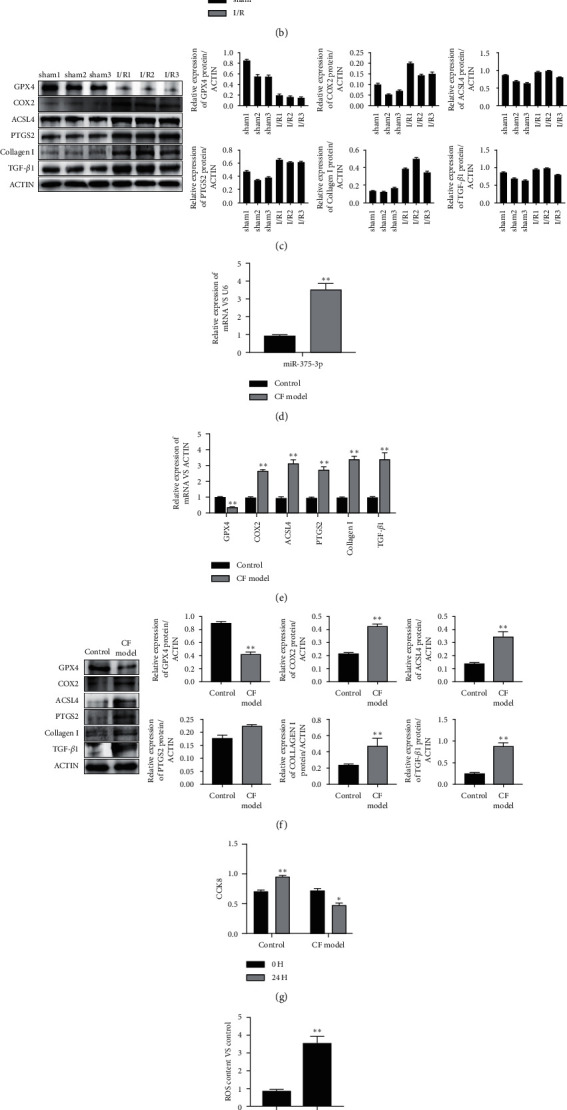Figure 1.

MiR-375-3p directly targets GPX4 to promote ferroptosis and cardiac fibrosis. (a) RNA was extracted from the myocardial tissues of rats in the sham operation group (sham) and ischemia-reperfusion group (I/R), and the expression of miR-375-3p was detected by RT-PCR. (b) Western blotting was used to detect the expression of ferroptosis- and fibrosis-related proteins in the myocardial tissues of 3 cases of sham group and I/R group. The expression of each protein was quantified. (c) RT-PCR was used to detect the expression of genes related to ferroptosis and fibrosis. (d) RNA of normal cardiac fibroblasts (control) and cardiac fibroblasts induced by angiotensin II (CF model) were extracted, and the expression of miR-375-3p was detected by RT-PCR. (e) Western blotting was used to detect the expression of ferroptosis- and fibrosis-related proteins in control fibroblasts and CF models. The expression of each protein was quantified. (f) RT-PCR was used to detect the expression of ferroptosis- and fibrosis-related genes in control fibroblasts and CF model cells. (g) Control fibroblasts and CF model cells were cultured for 24 hours, and cell viability was assessed by CCK8. (h) The level of ROS in the control and CF model cells was measured. (i) Luciferase reporter gene activity was used to detect the binding of miR-375-3p to the 3'UTR region or mutant 3'UTR region of GPX4 mRNA. Note.∗P < 0.05, ∗∗P < 0.01 compared with the control group.
